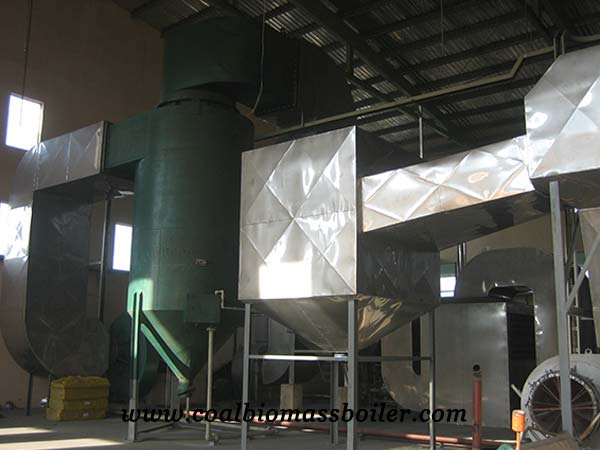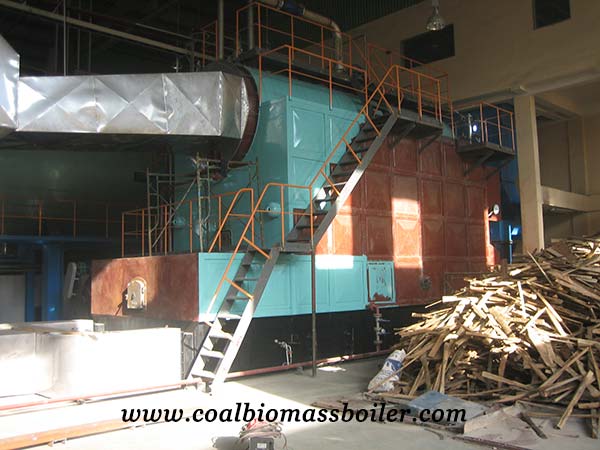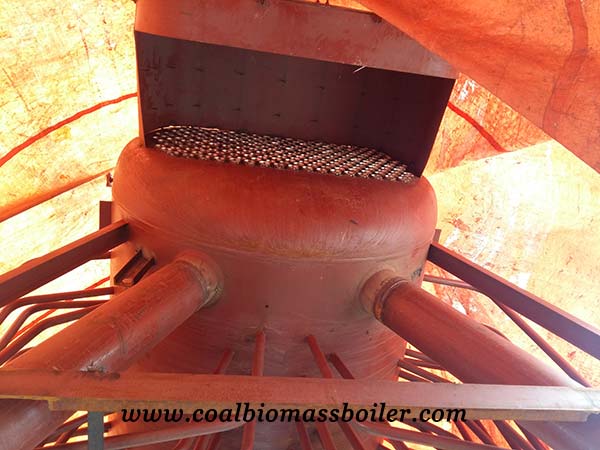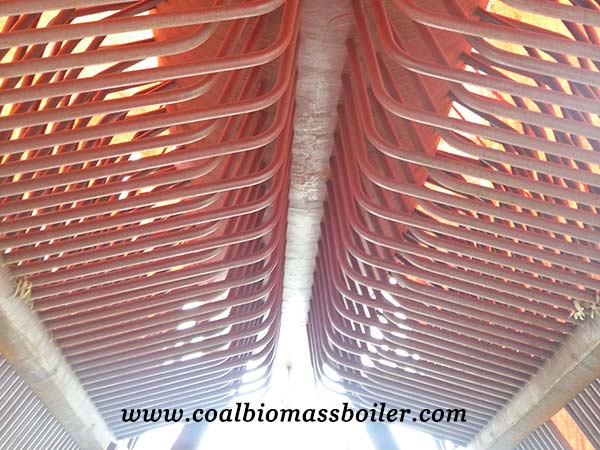Coal Fired Steam Boilers are widely used to generate heat by incorporating a firebox or furnace in order to burn the fuel. The generated heat is transferred to water to make steam in the food factory, drinking factory, juice factory, sugar refinery, tire factory, soap factory, cement production, concrete production, paper-making, brick-making, carton plant, chemical fertilizer plant, feed mill, knit mill, tissue mill, textile mill, palm oil factory, gloves factory, alcohol plant, chicken processing plant, instant noodle plant, medical and chemical industries, etc. In order to keep the factory running smoothly, we should try our best to maintain coal fired steam boilers in the right condition. We explain how to maintain coal fired steam boilers in detail.
Steps to maintain Coal Fired Steam Boilers
1. The following aspects should be noted during the Coal Fired Steam Boilers operation:
- The furnace shall not run with positive pressure, since the flame is likely to spray out and burn out the coal gate with positive pressure.
- If the ID fan shakes severely, operator should stop and have a check, generally it is due to wear of internal vane wheel, and it should be replaced.
2. The steam boiler should be checked once every 2-3 weeks.
- Open the front smoke box and rear inspection hole, and clean the ash in the threaded smoke pipe if any. Especially when the Coal Fired Steam Boilers runs at half-load, the ash must be cleaned immediately. Check whether the smoke box and the ash door are closed tightly; if the smoke pipe leaks, mend it according to relevant regulation.
- The chain grate rolls with no-load, the operator should check whether there is any breakage at sprocket shaft, if there is breakage, replaces it.
- If the water gauge, valve or pipe leaks, it should be repaired.
3. Operator should shut down the Coal Fired Steam Boilers and conducts a comprehensive inspection and maintenance for every 3-6 months:
- Remove the incrustation and dirt within the coal fired boiler and water cooled wall or the header, and wash with clean water.
- Remove the fire ash on the heated surface of the water cooled wall and the drum.
- Inspect the internal and external of Coal Fired Steam Boilers, such as the weld joint of the pressed part, whether there is a corrosion inside or outside of the steel plate. Once there is serious defect, fix it as soon as possible. If the defect is not serious, it may be left to next time of shutdown. If there are suspicious aspect, but not serious enough to affect safety, the operator should make a record for reference.
- The Coal Fired Steam Boilers can be painted in the corresponding part to prevent corrosion after checking.
- Check the antifriction bearing of the ID fan, and wear of the vane wheel and the shell.
Remove the furnace wall and the shell or the insulating layer for a thorough examination if necessary. If there is serious damage to any part, this part must be repaired before it can continue to run. While the inspection results and repairing condition should be recorded to the steam boilers safety technology register.
4. The casing of the insulating layer (outer skin) and the Coal Fired Steam Boilers base should be painted at least once a year.
5. If the front arch or rear arch is broken down, operator should fix it immediately.
6. The following check and maintenance shall be done when the Coal Fired Steam Boilers have been running for over a year.
- Grate governor box, slag remover, coal feeder and ID fan bearing should be took apart for cleaning and changing the lubricating oil, and oil seal should be replaced if it is broken.
- The quantity of lubricating oil in the grate governor box should be within the change scope, add oil when it is low.
- Take apart the chain grate, and check the wear of chain wheel, grate, pin roll of the grate, bearing block of back roll and shot-shield on the support, and change it if the wear is serious.
- Pull the grate back from the head according to the rotating direction from the top of the grate. Clamp should not be used at the wire rope. Pay strict attention to the axis parallel when assembling the back roll to avoid the deviation of the grate.
7. Maintenance method for long-term no use: dry method and wet method. Shutdown for over a month shall take the dry method, and less than a month shall take the wet method.
- Dry method. Discharge the water after shutdown, remove the internal dirt, and wash out. Drying the Coal Fired Steam Boilers furnace with low fire (not big fire), then distribute massive quicklime of 10mm~30mm to some plates, put the plates into the drum, do not let the quicklime contact with metal. The weight of the quicklime should be 2-3 kilograms per cubic meter. Turn off all the manholes, handholes, pipes and valves, check for every 1-2 months. Once the quicklime has turned to powder, the quicklime should be replaced immediately; remove the plates of quicklime out of the furnace when the Coal Fired Steam Boilers operate again.
- Wet method. Discharge the water after shutdown, remove the internal dirt, wash out, and turn off all the valves. Inject the alkaline solution into the Coal Fired Steam Boilers, and fill up the Steam Boilers with softened water until the Coal Fired Steam Boilers water emits from the vent valve, and shutoff the vent valve and feed water valve. Test the coal fired boilers water every week to ensure the excessive alkalinity; if the alkalinity is not enough, add sodium hydroxide or trisodium phosphate. For the alkaline solution preparation, generally add 5-8kg of NaOH, or 4-6kg NaOH and 1-2kg Na3PO4 to per ton of softened water. The PH value of the Coal Fired Steam Boilers water should be over 10 and should be strongly alkaline.


Steps to Inspect Coal Fired Steam Boilers
1. The currently operated Coal Fired Steam Boilers shall have an external inspection once a year, internal inspection every two years and hydrostatic test every six years.
The operator should conduct internal inspection first, then external test, if the interal and external inspection come to the same year.
For Coal Fired Steam Boilers that cannot do the internal inspection, a hydrostatic test every three years is necessary.
In addition to regular inspection, the Coal Fired Steam Boilers with one of the following conditions should also be made an internal inspection.
- Before the moved Coal Fired Steam Boilers are put into operation.
- Before the coal boiler operates again after over a year shutdown.
- Pressured components that suffer major repairs or reconstruction and operate after one year.
- The operator is doubtful about the safety and reliability of the coal steam boiler according to the last internal inspection result.
2. Internal inspection will focus on defective parts in last inspection.
- The internal and external surface of the coal fired boilers pressure components; especially the hole, weld and edge should be checked for cracks, chasm and corrosion.
- Whether there is wear or corrosion in the pipe wall, especially the part where the gas flow rate is high.
- Whether there are cracks, fracture and corrosion at the junction of the stay belt and the pulled components.
- Whether the expansion ports are tight, and there are annular crack and embrittlement at the end of the pipe.
- Whether the pressure components has depression, bending, swell and overheating.
- Whether there is corrosion at the contact part of the drum and bricks.
- Whether there is scale and slag on the water side of the pressure parts.
- Whether there is corrosion or crack on the interface of water inlet or outlet and the drum, whether the connection part of drainage and drain outlet is solid.
3. External inspection will focus on
- Whether the system of the boiler room is complete; whether the fireman and water-testing stuff have certification.
- Whether the safe passage around the coal boiler is blocked, and whether the visible pressure components, piping and valves within the boiler room have distortion or leakage.
- Whether the secure attachment is sensitive and reliable, and whether the connecting tubes between the coal fired boiler body and water gauge, safety valve, pressure gauge are blocked.
- Whether the high-low water level alarm device and low water level interlock protection device are reliable and sensitive.
- Whether the overpressure alarm and overpressure interlock protection device are reliable and sensitive.
- Whether the ignition program and flame-out protection devices are sensitive and reliable.
- Whether the auxiliary equipment of the coal steam boiler operates properly.
- Whether the steam boiler water treatment equipment is normal and whether the water quality is up to the standard.
4. In addition to conducting a hydrostatic test every six years, pressured components that suffers major repairs or reconstruction also need a hydrostatic test.
There should be an internal inspection before hydraulic test, and strength calculations if necessary. Hydrostatic test may not be used to determine the steam boilers working pressure.
5. Hydrostatic test steps
- In the hydraulic test, the surrounding air temperature should be higher than 5℃, or else should have anti-freezing measures. The water temperature shall be higher than the dew-point temperature to prevent dewing. But the temperature should not be too high to prevent vaporization and big temperature difference; generally the temperature should be among 20℃-70℃.
- When the feeding water is over, increase the pressure to 0.4MPa gradually, then conduct a rigorous check, and tighten the flange manhole cover and hand-hole cover nut if necessary.
- The water pressure shall be adjusted slowly; when the pressure rises to the working pressure, stop and check if there is leak or abnormal phenomena, then rise to the test pressure. The operator should maintain the test pressure for 20 minutes, and then reduce to the working pressure to have a check. The pressure should remain unchanged during the test period.
6. Hydrostatic test is qualified under the following conditions:
- There is no water droplets and mist on the pressure components metal wall and weld joint.
- There is no residual deformation after the test.
- There is no water b droplets at the expansion ports when the pressure reduces to the working pressure.
7. Safety measures and precautions:
- Tighten the flange nuts when the pressure exceeds 0.4MPa should be strictly prohibited.
- There should be a special label when conducting the hydrostatic test to avoid danger when there is a mass of people.
- Do not stand right before the weld flange and the valves when there is pressure.
8. Coal fired boiler inspection reports should be stored in technical file, and signed by the inspectors.


Steps to Shutdown Coal Fired Steam Boilers
1. Four circumstances of shutdown
- Grate is stuck or broken, slag remover is stuck; in order to solve the problem as soon as possible, shutdown the industrial boiler for temporary failure (short-time banking-up).
- Off-duty or other circumstances, the steam will not be used in the short term, a temporary shutdown is necessary.
- Completely shutdown occurs when draining the water for cleaning, inspection or repairing.
- In case of special circumstances, the industrial boiler shall have an emergency shutdown in order to be safe and reliable.
The above four circumstances for shutdown are different, also requirements are different, and specific steps are as follows.
2. Shutdown for temporary failure.
- Firstly turn off the gas supply (must be tightly closed), then close the FD fan, open the ID fan, stop the grate revolving.
- Remove the coal under the coal gate to avoid coal gate is burned out. Deal with the fault quickly, if the problem still exists after 1~2 hours, continue to solve the problem as the second circumstance.
3. Temporary shutdown
- Temporary shutdown shall be as planned, pay attention to safety and proper maintenance of equipment and also economize on coal and water.
- Turn off the gas supply (must be tightly closed) before shutdown, stop coal supply 20~30 minutes in ahead according to the steam use. Adjust the grate speed to the lowest speed, uplift the fire gate. When the coal on the grate has passed the coal gate about 200mm~300mm, stop the grate revolving and lay down the gate to prevent the entrance of a lot of cold air. Turn down the FD fan appropriately to make the coal burnout, and finally stop the FD fan.
- The water level is lower after the steam boiler is cooling, so the water level should be higher than the normal level before shutdown (not higher than the highest security level)
Turn off the main steam valve and flue gas governing valve after the steam supply is stopped and the pressure within the drum drops to zero.
4. Complete shutdown
Complete shutdown shall act as the original plan, generally once 1~3 months. Pay attention to safety and proper maintenance of equipment. After shutdown of the steam boilers in accordance with step 2, drain the water out when the water cools down to below 70°C. Uplift the safety valve to let the internal drum connect with the atmosphere. To shorten the cooling time, inject cold water into the drum through the feed water pipe, drain the hot water from the blowdown pipe at the same time. Open the manhole and handhole after drainage, and wash the incrustation by clear water.
5. Emergency shut-down
- In case of these following circumstances, the steam boilers shall have an emergency shut-down.
- Coal fired boilers water level is below the lowest visible edge of the water gauge.
6. After increasing the water supply and taking other measures, the water level continues to decline.
- The water level exceeds the maximum visible water level (full of water), and the water level is still invisible after drainage.
- There is no water feed to the Coal Fired Steam Boilers due to the water supply equipment failure or water supply system failure.
- Water level gauge, safety valve and pressure gauge are all out of work.
- Coal fired boiler component is broken, endangering the safety of operator.
- Combustion equipment is broken, furnace wall topples down or structure is burned red, threatening the safe operation of the Coal Fired Steam Boilers.
- Other abnormal circumstances endangering the safe operation of the Coal Fired Steam Boilers.
7. Emergency shutdown shall focus on preventing accidents from expanding, here are the details:
- Turn off the gas supply (must be tightly closed), stop the grate revolving and FD fan, and decrease the ID fan.
- Put out the flame in the furnace, generally with sand or wet coal ash, but irrigating the furnace with water is prohibited.
- Open the fire gate and inspection gate to cool the furnace after the fire goes out.
- Cut off the connection between the Coal Fired Steam Boilers and the main steam pipe.
- If there is water shortage or full water, operator may feed water to the coal steam boiler or blow down to lower the internal pressure.
- If the Coal Fired Steam Boilers has water shortage, feeding water to the coal steam boiler is prohibited.
About TAISHAN Group
Taishan Group is leading industrial boiler and pressure vessel designer, manufacturer and exporter dedicated to supply turn key coal fired boiler and industrial boiler solutions to worldwide customers. We are always working harder to become the leader in providing large or medium customized industrial boiler solution to meet market demands since its foundation in 1994. Our products extend as far as industrial boiler, power station boiler, pressure vessel, transformer, high-voltage switch, electric wire and cable, residual heat refrigeration machine, etc. We had provided many types of effective and states of the art coal fired boilers, biomass boilers and other industrial boilers, pressure vessels , transformers and other related products to over 36 countries.
TAISHAN Group had been specializing in delivering one stop industrial boiler solutions to over 36 countries for over 20 years. We are not only manufacturing best quality sand industrial boiler products but also providing professional design and installation service. OEM and ODM are also available.
